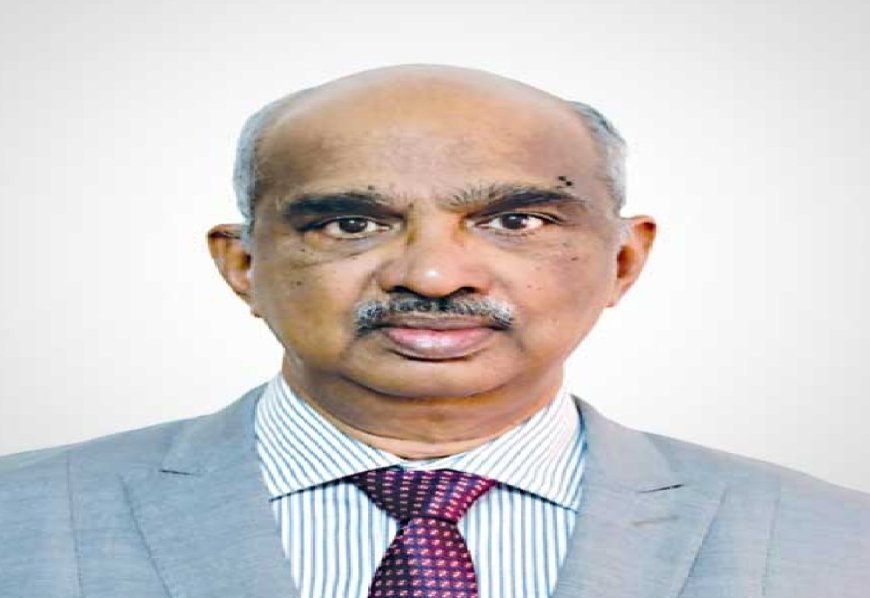Cargo handling efficiencies at some PPP terminals and private ports are at par with international standards.
R Ravi kumar Secretary General, Indian Private Ports & Terminals Association (IPPTA) How do you assess the current scenario of Indian ports sector in terms of infrastructure and cargo handling efficiency? The current port infrastructure is adequate to meet the demands of the trade at present. There has been an increase in the cargo handling

R Ravi kumar
Secretary General, Indian Private Ports & Terminals Association (IPPTA)
How do you assess the current scenario of Indian ports sector in terms of infrastructure and cargo handling efficiency?
The current port infrastructure is adequate to meet the demands of the trade at present. There has been an increase in the cargo handling capacity of major ports from 1,597.59 MTPA in 2021-22 to 1,617 MTPA during 2022-23. Cargo traffic at India's 12 major ports during 2022-23 increased by 8.8% to 783.50 million tonnes from 720.29 million tonnes handled during last year. It can thus be seen that the capacity utilisation is about 48%.
The capacity at non-major ports is around 1,000 million tons which is adequate to handle the cargo, given that the capacity utilisation was 59.73% in 2021-22.
The cargo handling efficiencies at some of the PPP terminals and private ports are at par with international standards. However, there are some major challenges in respect of major ports which include lack of adequate drafts, dependence on tides, poor mechanisation, insufficient number of equipment and other facilities, lack of skilled manpower, lack of proper evacuation facilities, old flotilla etc.
India has improved its position in the World Bank's Logistics Performance Index. How do you look at this as a key achievement for Indian ports?
It is noteworthy that India has improved in the Logistics Performance Index. This is a work-in-progress. There is a lot of scope for further improvement in this regard, especially in terms of adequate reduction in logistics costs.
What are the major challenges that hinder the port infrastructure developments in India?
Although privatisation is considered as panacea for development of port facilities, in the context of PPP projects, there is lot of cooperative efforts required from the Government/Port Authorities to make it a success. In a PPP project, the Port Authorities have the responsibility to provide timely and adequate marine facilities like access channels, protective works including breakwaters, pilotage and towage, land and utilities and supporting project infrastructure like timely road and rail connectivity, proper maintenance of access roads, facilities for Regulatory Agencies, parking facilities, warehousing/workshop facilities, timely resolution of disputes etc. Ports are hesitant to invoke review provisions contained in the concession agreements to make any changes in the agreements generating stressed projects.
Apart from the above, setting up of a dedicated National Maritime Fund from where adequate funding on liberalised terms for long term lending for enhancing port infrastructure can be carried out, restoration of incentive schemes like SEIS and other tax benefits would help in the accelerated port development.
Many Indian ports still don't have the required draft to attract bigger ships which limits prospects of these ports. What is your view in this regard?
Yes. It is true. Apart from technical considerations in deepening the berths at the existing facilities, there are financial constraints. Internationally, dredging is the responsibility of either federal or local governments. If a similar practice is followed in India, a comprehensive plan can be drawn to improve the drafts at ports.
Hinterland connectivity plays a major role in the cargo movement from and to the ports. How do you look at this scenario currently?
Hinterland connectivity is not adequate at most of the ports as the mining/manufacturing centres are located far away from the ports. In future, whenever new manufacturing facilities are being set up, the proximity to a port needs to be kept in mind.
Under PM GatiShakti Programme, DPIIT prepared a Comprehensive Port Connectivity Plan (CPCP) in consultation with the concerned ministries, both at the central and state government levels. CPCP incorporates 298 connectivity projects of which 191 projects relate to rail and road connectivity. These projects will hopefully enable enhancement of last mile and hinterland connectivity of ports.
How far are policy measures helping Indian ports infrastructure development? What steps are needed for further enhancement of port operations?
Recent enactment of Major Port Authorities Act, 2021, promulgation of new Model Concession Agreement along with tariff freedom to PPP operators will help in attracting more private investments in port infrastructure improvement. The PM GatiShakti programme is providing the necessary impetus required for early and smooth completion of the projects.
The following steps are recommended for improving the physical efficiency parameters at major ports:
- Provision of adequate drafts at ports to accommodate the post-Panamax and cape vessels by targeting at least 18-m drafts at selected ports.
- There is a need to increase mechanization at Indian ports where all berths should be adequately equipped with dual-cycle cranes, high-capacity loaders and unloaders, conveyor systems, harbour mobile cranes, grab unloaders, etc.
- Privatisation of pilotage and towage services in the port sector. Internationally this practice has proved beneficial.
- Availability of skilled manpower in port sector is another challenge in improving productivities. Institutional mechanisms should be developed under the auspices of the National Skill Development Corporation (NSDC).







